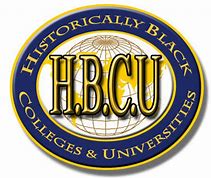The only African American “in the sterling field of Senior PGA Tour players…” at this year’s U.S. Senior Open.
 Colorado Springs, Colorado, July 30, 2008 -2008 represents a year of “first” in many areas of American life. For the first time in American history has a person of color as the presumptive Democratic Candidate for president of the United States.. Tiger Woods has already won the country’s greatest golf championship, the U.S. Open, and there is a very real possibility that another person of color could win the U.S. Senior Open in this “Year of Firsts.”
Colorado Springs, Colorado, July 30, 2008 -2008 represents a year of “first” in many areas of American life. For the first time in American history has a person of color as the presumptive Democratic Candidate for president of the United States.. Tiger Woods has already won the country’s greatest golf championship, the U.S. Open, and there is a very real possibility that another person of color could win the U.S. Senior Open in this “Year of Firsts.”
We thought it appropriate to reprint a portion of writer/author J.C. Calloway’s “The Invisible Golfers,”where in 1997 (or whatever year) he describes the excellence and challenges of Jim Thorpe’s career on the PGA and Senior PGA Golf Tour.
(Editor: For a complete reprint of the original article and information on how to obtain a copy of the book, Invisible Golfers by J. C. Calloway – contact: editor@minoritygolfmag.com).
Excerpt from Chapter Four, The Invisible Golfer
By J.C. Calloway
Perhaps one of the most enduring PGA Tour professionals is Jim Thorpe. His relentless determination to compete continuously on tour is a prime example of what it takes to survive the challenges that derive from the week-to-week grind that tour players face.
Thorpe actually began his athletic career as a football player. His prowess as a power running back in high school earned him a scholarship to Morgan State University. He was introduced to golf as a teenager by his father, who was a greens superintendent. Thorpe was once noted as saying, “In those days, I would rather play football. My older brother Chuck was the best golfer in the family.” Chuck had played on the tour off and on during the 70s and had demonstrated exceptional talent: He hit 300-yard drives frequently, was a solid iron player, had deft touch around the greens http://staging.minoritygolfmag.com/wp-admin/post-new.php http://staging.minoritygolfmag.com/wp-admin/post-new.php and was considered by many as one of the best overall black players. It remains uncertain why Chuck never made it big on tour.
When Jim decided that he wanted to pursue a career on the PGA Tour, Chuck was there to assist him. The two brothers played and practiced at Pineherst in North Carolina and worked on the weakest part of Jim’s game, which was his long irons. After months of preparation, Chuck told Jim that he was ready for the tour. In the fall of 1975, Jim obtained his PGA Tour card. But that following year he only made $2,000 which wasn’t enough to maintain his playing privileges, so he had to return to the qualifying school.
Two years later in the fall of 1978, Jim obtained his card once again by becoming the co-medalist with Jim Fought at the Q-school. In the 1979 season, Jim got off to a blazing start when he tied for second place with Tom Watson in the Joe Garagiola-Tucson Open and ended up only two strokes behind winner Bruce Lietzke.
In 1981, Thorpe made national sports headlines when he led the opening round of the U.S. Open, where he shot a blistering 66 at Marion Golf Club in Ardmore, Penn. By doing so, he became the first black to hold sole possession in any round of that major championship. After his opening round of 66, he shot scores of 73, 70 and 72, and finished eight strokes in back of the winner, David Graham. Thorpe picked up a check for $5,000 and gained more confidence in his ability to perform well on tour.
In 1985, Thorpe experienced his best season ever when he became a two-time winner. He won the Milwaukee Open (outlasting Jack Nicklaus in the final few holes) and later, the Tucson Open. He came close to becoming a three-time winner, but lost the Western Open to then amateur Scott Verplank in a playoff. He also won the highly competitive Seiko-Tucson Match Play event by defeating Jack Renner in the final match. That year he finished fourth on the money list with $379,091 in official earnings.
Thorpe defended his title at the 1986 Seiko-Tucson Match Play Championship and once again took home the winner’s trophy as well as a check for $150,000, by defeating Scott Simpson in the final match. His combined earnings for the back-to-back victories in 1985 and 986 was $300,000. He finished 15th on the money list for 1986. Jim struggled on the tour however, for the next five years, primarily because of hampering injuries which included a fractured wrist. In 1991, he earned only $46,000 in official money.
However, he did appear in the winner’s circle once again that year. This time with his brother Chuck (who caddied for him), he won the Amoco Centel championship–a non PGA sponsored event that was created for the forty-years-and older group. Though it wasn’t considered a regular PGA event, many tour players competed. Thorpe’s victory earned him a check for $115,000. Shortly afterwards, he suffered back problems which limited his playing capabilities. In 1996 he was given a special medical exemption.
It had been twenty years since Jim Thorpe first made the tour. At one point he had made more than $1.5 million in official PGA earnings. His tenacity and will, no less than his game, are reasons for his tour longevity. Also, his unwillingness to succumb to pressure exemplifies the resourceful spirit that is necessary to overcome the obstacles which are always present on the PGA Tour.

